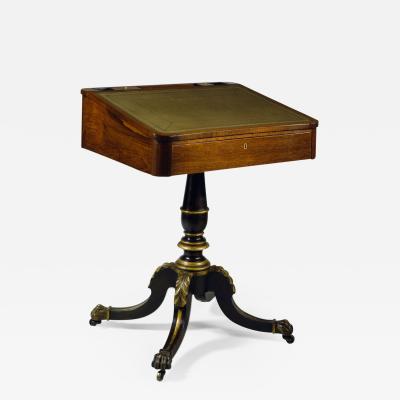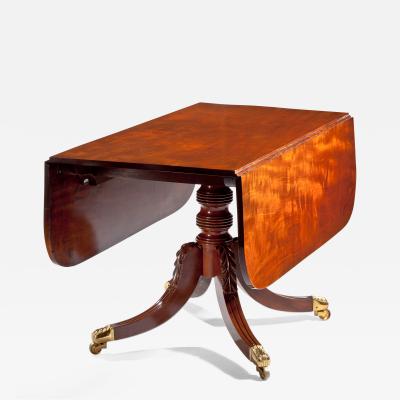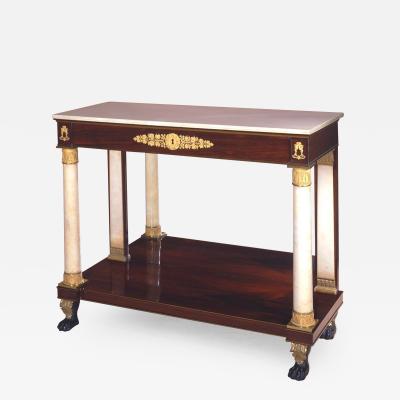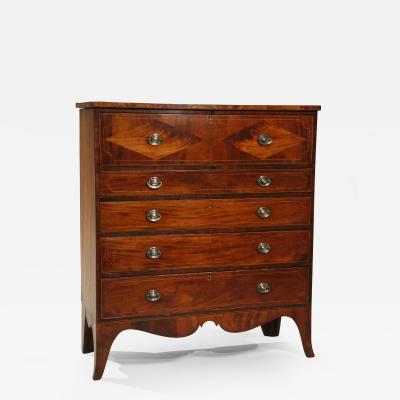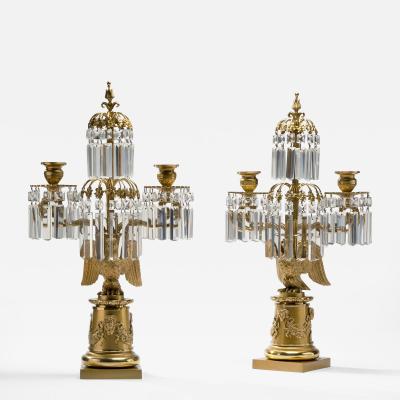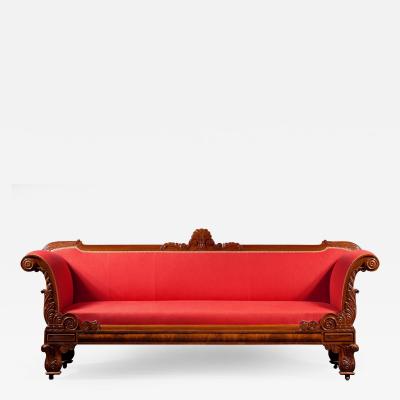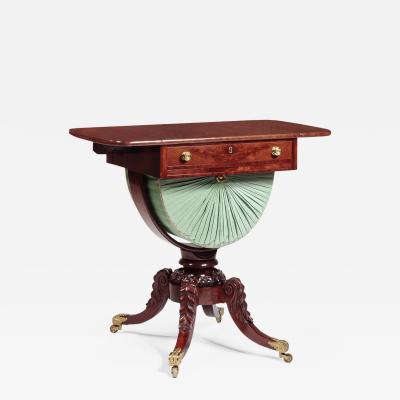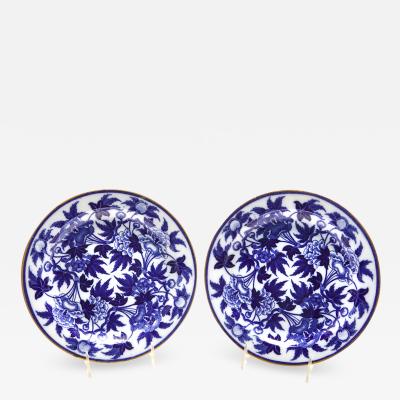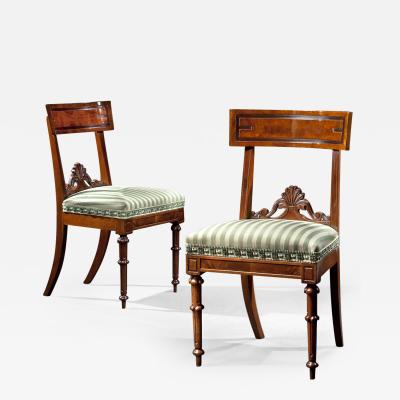Monumental Klismos Armchair
-
Description
IMPORTANT MONUMENTAL CARVED MAHOGANY KLISMOS ARM CHAIR
Attributed to Thomas Seymour for Isaac Vose & Son
Boston, 1819-1824
The crest rail inlayed with flame mahogany and banded with rosewood above a carved stay rail simulating pleated, draped fabric swag flanked by acanthus leaves above an upholstered slip seat, all held between scrolled styles sweeping forward and resting on the seat rails terminating with acanthus carving above the knees, the arms attached to the styles just below the crest rail, scrolling forward and down to rest on the seat rails, the saber front legs carved with volutes and acanthus at the knees and terminating with carved dog paw feet, rear saber legs.
Secondary wood: Cherry.
H: 38¼” W: 26” D: 17”
Condition: Very good, an old repair to the (proper) right style at the junction of the arm, and (proper) right “ear” replaced at the top of the style. Refinished with shellac in the manner of the period. Modern upholstery
Published: Page Talbott. Boston Empire Furniture: Part II The Magazine ANTIQUES (May, 1976), p.1009, pl. IV.
Inspired by the Klismos chair of ancient Greece, the extraordinary monumentality of this chair strongly suggests its purpose as a bespoke ceremonial seat, possibly for a high government official such as Governor or state house speaker. Its scale is unique in Boston furniture of this period.
This monumental Klismos armchair is related to several open arm chairs attributed to Seymour and Vose by Messrs. Mussey and Pearce, whose recent study of the subject of Vose's work is definitive. In particular, figure 327, an open arm chair with sweeping scrolled arms attached to the styles in a similar way and small paw feet set off, not in a continuous weep, from the saber legs, as on the present chair. Figure 12 shows Seymour's use of a closely related crest rail in combination with the sweeping scrolled arms. A related carved swag stay rail can be seen in a set of chairs illustrated in figure 183. The carved volute and acanthus carving at the knee of the present chair can be clearly seen on many tables by the Vose firm including: the knees of the legs of center tables pictured in figure 100 and 188, a sofa table (figs. 232, 233), a work table (fig. 220), and a card table seen as the frontispiece of the book.
As with much great American furniture, this chair has both French and English antecedents, with which Vose was well acquainted. In 1807 Pierre de la Mésangère published a Klismos-form Fauteuil d'appartement dore au mat with sweeping scrolled arms. Mussey and Pearce show multiple examples of the influence Mésangère had on Vose. Perhaps having poached the idea, Messrs. Morgan and Saunders, Catherine Street, Strand, London produced, in 1811, a metamorphic Klismos arm chair and library steps closely related to the present chair, published by Rudolph Ackermann in his Repository of Arts (London: July, 1811); the only such related design in any English design directory of the period. Ackermann's Repository is also known to have been influential with Boston cabinetmakers and their clients. Indeed, a side chair attributed to the Vose firm by Mussey and Pearce (fig. 324), is drawn directly from Ackermann's 1824 design.
Provenance: Dr. & Mrs. Roger G. Gerry collection, Roslyn, NY.
Carswell Rush Berlin, Inc. -
More Information
Origin: United States, Massachusetts Period: 19th Century Materials: Carved Mahogany Condition: Good. Creation Date: 1819-1824 Styles / Movements: Classical, Regency, Traditional Book References: Robert D. Mussey, Jr. & Clark Pearce, Rather Elegant Than Showy: The Classical Furniture of Isaac Vose (Boston: Massachusetts Historical Society, 2018), 263. Dealer Reference #: S-A-041071 Incollect Reference #: 487532 -
Dimensions
W. 26 in; H. 38.25 in; D. 17 in; W. 66.04 cm; H. 97.16 cm; D. 43.18 cm;
Message from Seller:
Welcome to Carswell Rush Berlin Antiques, a premier New York City-based dealer specializing in American antique furniture and decorative accessories from the Classical period (1800-1840). For inquiries, please contact us at 646.645.0404 or email carswellberlin@msn.com.




















